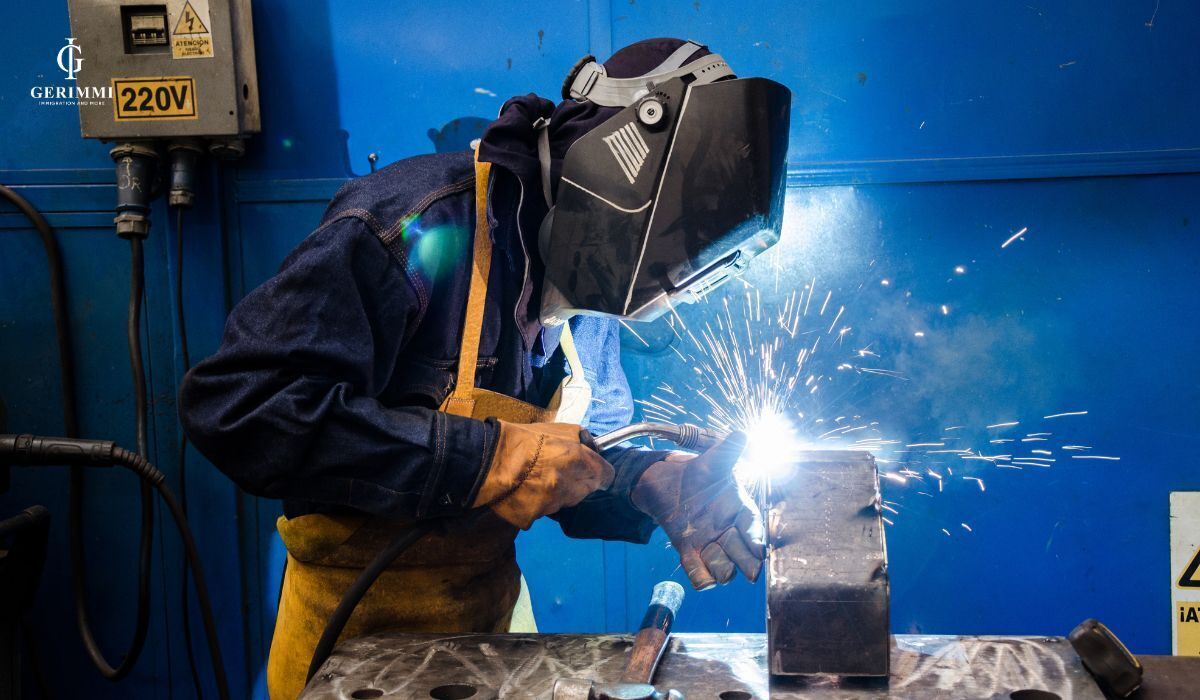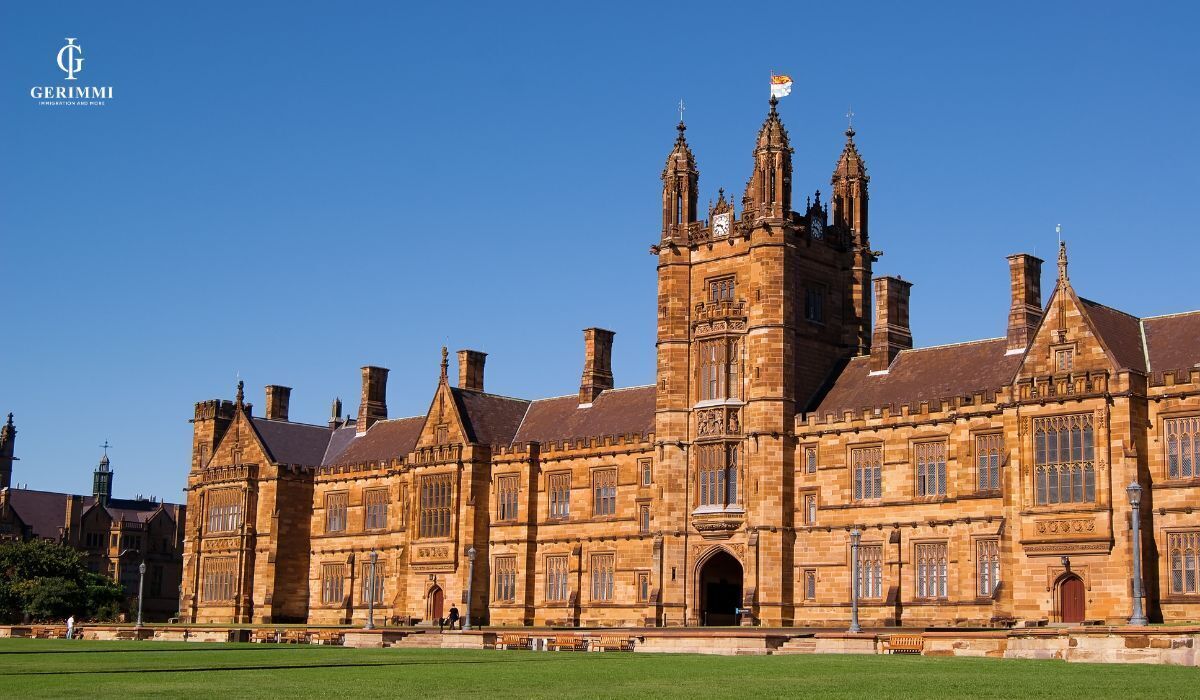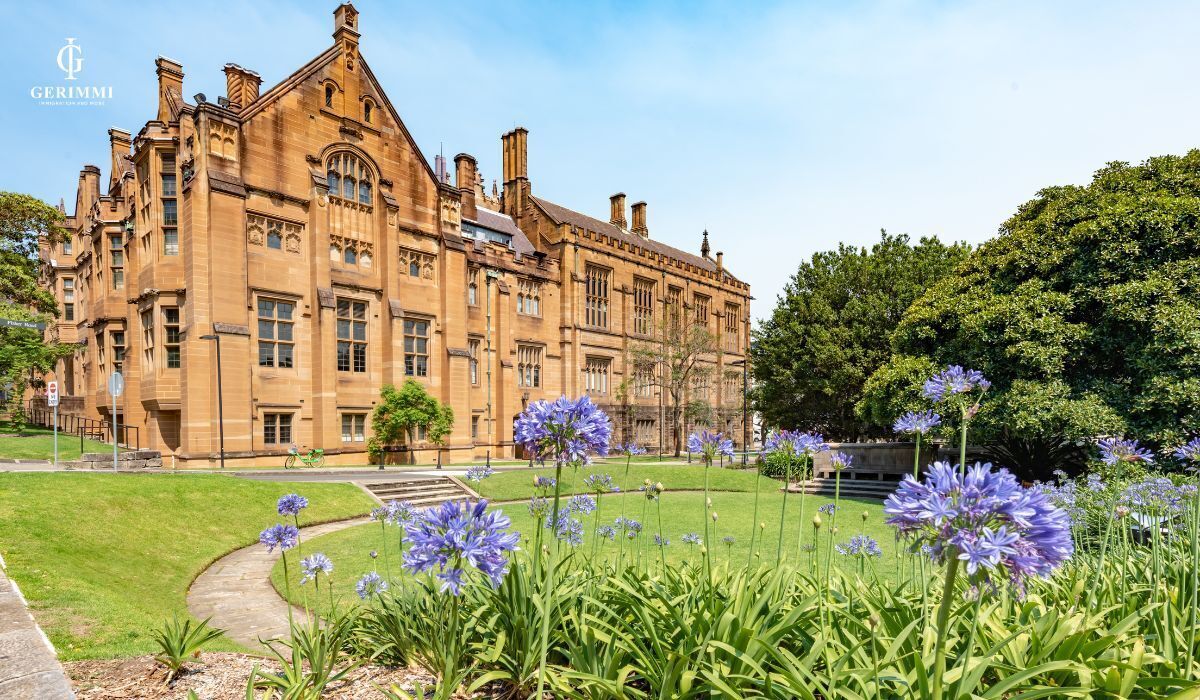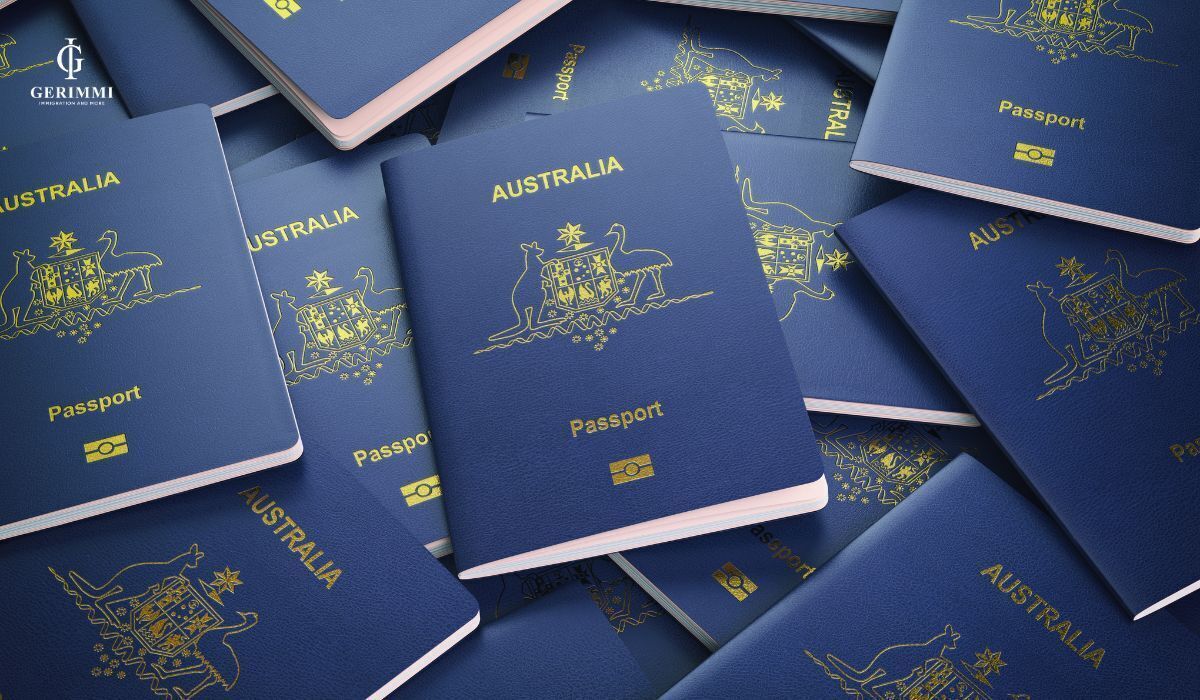In recent years, vocational training in Australia has increasingly become an ideal choice for many young Vietnamese people who want to combine study with practice and have the opportunity to settle down. With a systematic and high-quality vocational training system including TAFE (public schools) and RTO (private organizations), Australia offers a specialized, practical vocational training environment and open career opportunities.
I. What is special about the vocational education system in Australia?
Vocational study in Australia is increasingly becoming the top choice for many young Vietnamese people thanks to its practical learning model, reasonable costs and open settlement opportunities. Whether you are looking to study vocational training in Australia, or simply want to understand more about vocational training in Australia, the vocational education system including TAFE and RTO is the necessary starting point.
1. Vocational training model combines theory and practice
Unlike many other countries, the vocational education system in Australia stands out for its close combination of theoretical learning and practical practice. When studying a vocational course in Australia, you will be able to intern in a business, practice facility or work simulation model. This is especially useful if you are aiming for practical careers such as restaurants - hotels, construction, health care or studying medicine in Australia.
2. The role of skills training for the labor market
Vocational study abroad programs in Australia are designed to closely follow the needs of businesses, helping students shorten the time to find a job after graduation. That is also the reason why vocational study abroad programs in Australia are often on the list of skills shortages, are in high demand in Australia and are given priority when considering vocational study visas in Australia or vocational study abroad visas in Australia.
3. Job and settlement opportunities after vocational training
After completing vocational college studies in Australia, students can continue to stay and work under the 485 visa, gain experience and move towards vocational study and settlement in Australia through skilled migration programs. This is an ideal opportunity for those who plan to study, work, and settle permanently.

II. What is TAFE?
TAFE (Technical and Further Education) is a system of public vocational training institutions established and operated by the Australian government in each state and territory. This is one of the most solid and reputable vocational education foundations in Australia, providing high quality training programs for both Australian citizens and international students.
TAFE plays a central role in developing skills for the workforce. TAFE courses are designed to be closely related to professional practice and are constantly updated according to the needs of the labor market. When studying vocational training in Australia, choosing TAFE means you are accessing a professional, systematic and highly applicable study program.
1. Public & high quality
TAFE is a public vocational school directly administered by state and territory governments, meaning all programmes, teaching staff, facilities and qualifications must beNationally certified and rigorously tested.
In each state, TAFE colleges are regulated by the state education department, which ensures consistency and transparency across the system. This gives students peace of mind about a stable, reliable learning environment, and especially suitable for first-timers vocational study in Australia.

2. National Degree
All TAFE programmes are within the national qualifications framework - Australian Qualifications Framework (AQF)This means that the Cert III, Cert IV, Diploma or Advanced Diploma you receive after studying at TAFE is recognised across Australia and many other countries.
Possessing an AQF qualification helps students:
- Easy transfer to university if you want to continue your studies
- Increase competitiveness when applying for jobs or settling down
- Visa approved study abroad in Australia or post-study work visa
3. Lecturers are industry experts
One of TAFE's great strengths is thatHigh quality teaching staff, most of them are experts who are working or have worked for many years in the industryThey are not only good at theory but also have the ability to impart practical skills, bringing students closer to the real working environment right from their school days.
In addition, lecturers at TAFE also help students build industry network, career orientations. In addition, job introduction and soft skills support are very useful for those who want toVocational study and settlement in Australia.

4. Modern facilities, realistic simulation
Studying at TAFE is learning inProfessional simulation environment like real workplaceAll campuses have:
- Mechanical workshop, technical lab
- Model restaurant, simulated hotel
- Simulation medical care room
- Salon-standard hair and makeup studio
- Modern information technology and computer network systems
Investment in facilities helps vocational students in Australia not to "study alone", but to practice continuously, best preparing them before entering the real labor market.
5. Tuition fees & courses at TAFE
LevelCost of vocational study in Australia through the TAFE system is considered reasonable and worth investing in compared to the quality of education received. Depending on the state, field of study, and level of certification, tuition fees typically range from 9,000 - 18,000 AUD/year, not including living expenses, insurance and books.
III. What is RTO?
RTO (Registered Training Organisation)are vocational training organizationsAustralian Government licensed and quality inspected, to provide nationally recognized vocational training programs (according to the system)Australian Qualifications Framework). This is a flexible training model, chosen by many students when studying in Australia.
The RTO system includes private schools, independent vocational education organizations, specialized academies... With a compact size and a training program that is updated closely to reality, RTO becomes an attractive choice for international students who want vocational training in Australia in a practical way, saving time and money.
1. Recognized and quality tested
Although it is a private organization,all RTOs in Australia are required to register with the national vocational education and training quality regulator - ASQA (Australian Skills Quality Authority).This ensures that all programmes, lecturers and facilities meet national standards, andAustralian recognized qualifications.
With this tight control, international students can feel completely secure when choosing.study art in Australia at reputable RTOs, assigned CRICOS codes for international admissions.

2. Flexible, practical and personalized
One big advantage of RTO is that flexibility in training:
- Multiple intakes throughout the year (not limited to February or July like university or TAFE)
- Class schedules can be evening, weekend or part-time.
- Some schools allow online - offline learning combination, convenient for students to study and work at the same time
Additionally, RTOs often offer courses "by profession" that are very practical, suitable for the needs of the Australian labor market. From there, it opens upSkilled Migration Opportunities in Australiaor rapid transition into the workforce.
3. Diverse majors, close to the market
One of the reasons whyVocational study abroad programs in AustraliaRTO is preferred becauseHighly practical and regularly updated according to recruitment needsSome typical industry groups include:
- Health care: Aged care, disability support, community services
- Trade - technology: Welding, electrical, mechanical, assembly
- IT & Communications: Graphic design, website management, digital
- Beauty, fashion, hospitality
- Business, marketing, accounting
Much RTO has links with employersHelping students do internships and increase job opportunities after graduation is an important factor for those who are aiming forAustralian vocational study visa 2025or skilled migration visa.

4. Affordable tuition & short-term study programs
Compared to TAFE,Cost of vocational study in Australia is regularly significantly lower, only from 7,000 – 14,000 AUD/year, depending on the major and program duration. In addition, the study time can also be shorter if you choose a fast-track course, helping to save on living expenses.
IV. Comparing TAFE and RTO: Which one should you choose?
|
Criteria |
TAFE - Public school |
RTO - Recognized Private Organization |
|
Type |
State Government Vocational College |
Registered Private Vocational Training Organization (RTO) |
|
Monitoring & Inspection |
State government, subject to strict controls |
Licensed & accredited by ASQA |
|
Degree |
Cert III, Cert IV, Diploma, Advanced Diploma (AQF) |
Cert III, Cert IV, Diploma, Advanced Diploma (AQF) |
|
Quality of training |
Stable, in-depth, many lecturers are experts |
Flexible, practical, experienced instructors |
|
Facilities |
Modern, highly realistic simulation (lab, workshop, model) |
Depending on the size of each school, there are some restrictions. |
|
Popular majors |
IT, construction, nursing, restaurant - hotel... |
Beauty, care, engineering, marketing, accounting… |
|
Class schedule |
Concentrate by term (2 – 3 terms/year) |
Continuous opening, short-term & flexible courses available |
|
Tuition |
9,000 – 18,000 AUD/year |
7,000 – 14,000 AUD/year |
|
Internship & Job Opportunities |
Good, lots of links with big businesses |
Good, especially in service, technical skills |
|
Settlement opportunities |
High if choosing a profession in the settlement list (MLTSSL) |
High if studying in the right field on the skilled immigration list |
|
Who is it for? |
Students want a formal, public learning environment |
People who need to learn quickly, save money, and go to work early |
V. Levels of education in Australian vocational education
The vocational education system in Australia is designed according to the AQF - Australian Qualifications Framework, including many flexible levels from basic to advanced. This allows international students to choose a path that suits their abilities, career goals and settlement. Below are the vocational education levels in Australia that you need to know when intending to study vocational education in Australia.
1. Certificate I, II, III, IV
When starting vocational studies in Australia, international students are often introduced to Certificate I, II, III, IV programs, which are the foundation levels in the vocational education system in Australia according to the AQF (Australian Qualifications Framework). These are also the minimum levels for you to be eligible for an Australian vocational study visa. In particular, Cert III and Cert IV are the two most popular levels in the vocational study pathway.
- Certificate I & II Focus on basic skills and career orientation, suitable for beginners or those who have never studied a trade in Australia.
- Certificate III is an important stepping stone, training practical skills and professional application, helping students easily access the Australian labor market.
- Certificate IV Improving theoretical knowledge and management skills is very suitable if you want to study for a Diploma or have a long-term orientation towards vocational study and settlement in Australia.
Studying at Certificate levels helps international students build a solid foundation before moving on to higher programs, while also meeting the requirements for vocational study in Australia such as academic qualifications, English proficiency (IELTS) and learning ability.

2. Diploma and Advanced Diploma
After completing the Certificate IV program, students can continue to study for a Diploma or Advanced Diploma, the two most advanced levels in the Australian vocational education framework. This is an ideal choice for those who want to have solid skills and expand their employment and settlement opportunities after studying a trade.
Diplomas typically last 12 to 18 months and focus on practical skills, critical thinking and problem solving in a real-world work environment. Advanced Diplomas, on the other hand, are a more advanced level, delving into technical and management skills. They are particularly suitable for senior technical or middle management positions.
Popular majors at Diploma level include:
- Nursing, medicine (study medicine in Australia according to career direction)
- Construction, mechanical engineering, information technology
- Tourism, hotel, restaurant management
- Beauty, health care, fashion
These occupations are all on the priority occupation list for settlement in Australia (MLTSSL or STSOL), making it easy for you to apply for a skilled visa after graduation. In particular, if you study at a TAFE or RTO accredited by CRICOS, you also have the opportunity to do paid internships to gain experience and support the cost of studying vocational training in Australia.
3. Corresponding study time
In total, if you choose the Cert III to Cert IV to Diploma and to Advanced Diploma route, you can complete it in 2.5 - 3.5 years, significantly shorter than studying at university for 3 - 4 years.
|
Level of education |
Study time (full time) |
|
Certificate I |
4 - 6 months |
|
Certificate II |
6 - 9 months |
|
Certificate III |
6 - 12 months |
|
Certificate IV |
6 - 12 months |
|
Diploma |
1 - 1.5 years |
|
Advanced Diploma |
1.5 - 2 years |
VI. Benefits of studying vocational training in Australia
- Learning goes hand in hand with practice, close to the labor market
Unlike purely theoretical programs,vocational study in Australiahighly applicable. Students are trained through practical classes, realistic simulation models, and internships at businesses. Thanks to that, you can easily access practical working skills, helping to increase employment opportunities immediately after graduation.
- Tuition costs are more economical than university
One of the reasons why many people choose vocational training in Australiais much more affordable than college.Cost of vocational study in Australia usually ranges from 7,000 - 18,000 AUD/year, depending on the course and type of school (TAFE or RTO). In addition, a shorter study period also means you save on living expenses, reducing financial pressure when applying.Australian vocational study visa.
- Many occupations are given priority for settlement
Australia always has a great demand for human resources in the fields of engineering, health care, restaurants - hotels, construction, technology, etc. This is alsoVocational study abroad programs in Australiaregularly appear on the skilled migration lists (MLTSSL, STSOL). Students completing vocational training may be eligible to applyAustralian skilled visa (subclass 485 or 190), creating favorable conditions for long-term work and settlement.
- Flexible learning path, easy to transfer to university
Vocational study in Australia is not a “one-way” path. After completing a Certificate IV or Diploma, students can transfer to Bachelor programs at Australian universities. Many schools also waive credits for those who have completed vocational studies. This is a smart solution for those who want to save time and money while still achieving a university degree and the opportunity to settle down later.

VII. Frequently Asked Questions (FAQ)
- What are the requirements for vocational study in Australia?
To study vocational training in Australia, you need to graduate from high school, have an IELTS score of 5.5 or higher, demonstrate sufficient financial resources and register for a vocational course from Certificate III at a recognized school. The application for an Australian vocational training visa (subclass 500) also needs to be carefully prepared to ensure a high success rate.
- What are the vocational training levels in Australia?
Vocational education in Australia is available at Certificate I–IV, Diploma and Advanced Diploma levels. These qualifications are part of the Australian Qualifications Framework (AQF) and are tailored to the individual needs of vocational education in Australia. Diplomas can be used as a pathway to university if you wish to continue your studies.
- How much does it cost to study vocational training in Australia?
The cost of studying vocational training in Australia ranges from 7,000 - 18,000 AUD/year, depending on the field, state and type of school (TAFE or RTO). In addition to tuition fees, you will need about 1,500 - 2,200 AUD/month for living expenses. Compared to university, studying vocational training in Australia is more economical and allows you to start working early.
- How long can I stay in Australia after graduating with a vocational study visa?
After completing a Diploma or higher, you can apply for a 485 visa to stay in Australia to work for 1.5 - 6 years. This is an important stepping stone if you want to apply for a skilled visa and settle permanently in Australia after studying a trade.
- Can vocational training in Australia be transferred to university?
Yes. After completing a Diploma or Advanced Diploma, you may be able to gain credit towards entering the second year of a university degree. Many TAFEs and RTOs have links with universities to make it easier for international students to study vocational training in Australia.
- What do you need to prepare to study and settle in Australia?
You should choose a major on the priority skills list (MLTSSL, STSOL), study at a reputable school (TAFE or RTO), and prepare your academic records, IELTS, and finances well. After graduation, work in the right field to apply for a 485 visa and move towards skilled migration.
Conclusion
The vocational education system in Australia, including schoolsPublic TAFEand organizationPrivate RTO, optimally designed to develop practical skills and real-world work capacity. Depending on your personal goals, you can choose the appropriate model to study occupations that are lacking in human resources in Australia.

